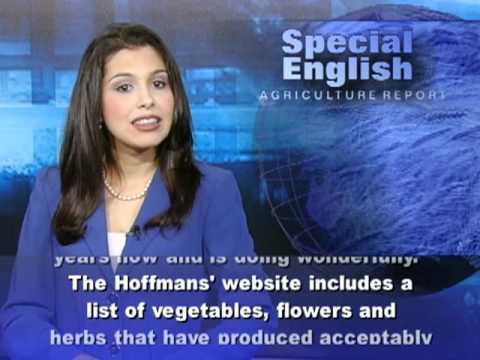Gardening: Vegetables Made in the Shade
 |
This is the VOA Special English Agriculture Report from voaspecialenglish.com | facebook.com/voalearningenglish
Not all vegetables need lots of sunshine. Mark Hoffman and his wife, Guia, own a bed-and-breakfast guesthouse in rural Kempton, Illinois. The Hoffmans have also been growing food and flowers for twenty-five years. For almost ten of those years, Mr. Hoffman has been working with shade plantings. He says visitors to his website -- greenhousebed.com -- often ask how to plant in shade spaces. "The bottom line here is that most plants will produce more in full sun. But if you do not have full sun, there are other options." For example, he grows tomatoes near oak trees. Oak trees can produce a lot of shade. But Mr. Hoffman says his tomato plants grow as long as they get five hours a day of direct sunshine, especially morning sun. Not only does this go against the traditional advice that tomatoes need six, eight, even twelve hours a day of full sun. It also shows how plants and tree roots can share nutrients and water. Mr. Hoffman also planted asparagus around a tree at its drip line, the area below the outer limit of the branches. Rain drips down right on the asparagus. He says the asparagus "has been there for six years now and is doing wonderfully." The Hoffmans' website includes a list of vegetables, flowers and herbs that have produced acceptably for them in partial shade. Besides tomatoes and asparagus, these include broccoli, daylilies, horseradish, Irish potatoes, oregano and winter onions. Mr. Hoffman says plants with wider leaves seem to do better in shady environments. He also found that his potatoes did better in partial shade than in full sun. Moving them out of the sun helped control an insect problem with leaf hoppers. Mr. Hoffman does not use pesticides. Instead, he planted the potatoes at the drip line, especially on the east side of the tree. The potatoes get morning sun, but they are shaded during the hottest part of the day. Leaf hoppers dislike shade, and the hottest part of the day is when they do the worst of their damage. Time of day. Brightness of the sun. Shadows from trees, walls and buildings. These all influence how much sunlight falls, or does not fall, on plants. And extension agent Curtis Swift at Colorado State University says people interested in shade planting should also remember something else. The term "shade" can describe different amounts of darkness. He says it can even mean different things in different parts of the world. For VOA Special English, I'm Alex Villarreal.
(Adapted from a radio program broadcast 02Aug2011)
|




